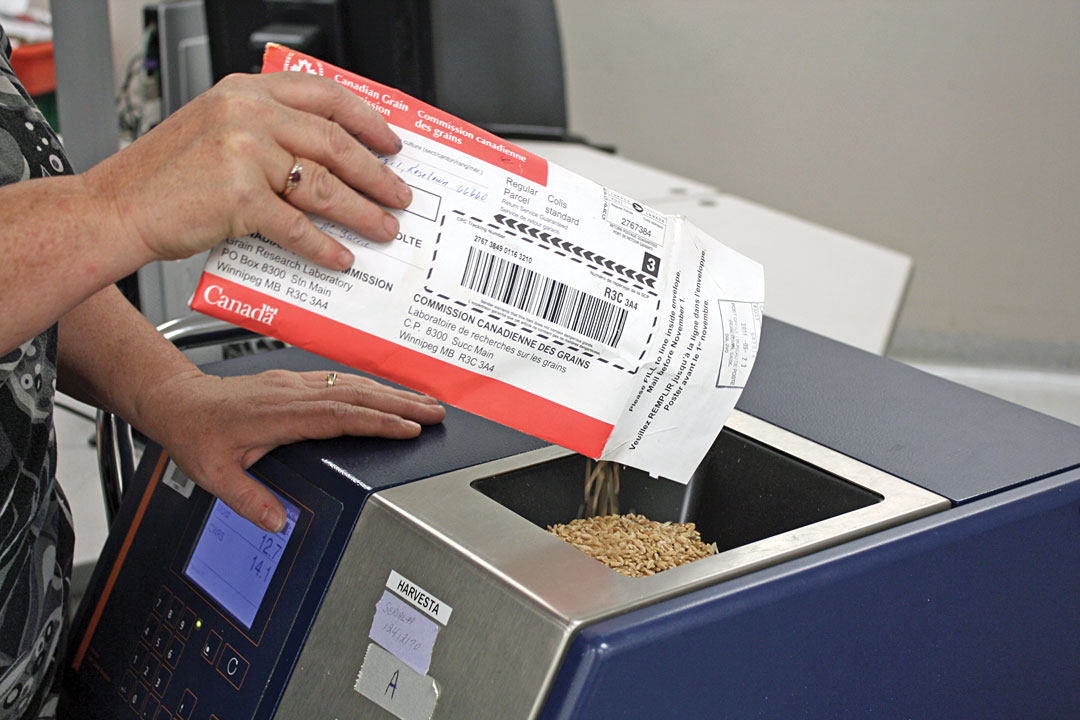SURPLUS SUGGESTIONS
UTILIZING CANADIAN GRAIN COMMISSION EXCESS USER-FEE DOLLARS A WORK IN PROGRESS
BY ANDREA HILDERMAN
In collecting excess user fees from farmers, the Canadian Grain Commission (CGC) accumulated a sizable surplus since 2013/14. The almost $100 million is now the subject of an industry- wide consultation on its potential uses. The CGC is expected to announce plans to review the proposals and suggestions it has received. As the federal grain- handling regulator doesn’t have the authority to make this spending decision, ideas will be submitted to the Treasury Board of Canada Secretariat, the federal departments of justice, finance and agriculture, and Agri-Food Canada. The CGC also foresees soliciting further input before a decision is made.
The deliberation process was launched Mar. 1, 2017, with a discussion document outlining a number of proposals, including the creation of a producer compensation fund to enhance the existing CGC Payment Protection Program; reducing CGC user fees; and upgrading the CGC Grain Research Laboratory and/or establishing new labs with real-time analytics at licensed terminal elevators to enhance CGC services. Industry and farmer stakeholders were invited to comment. This included all CGC licensees, producer and industry organizations, as well as government organizations with a stake in the outcomes.
The majority supported using the surplus to reduce CGC user fees as opposed to creating a new producer compensation fund. It was felt the latter might unfairly benefit less stable licensees and/or lead to more risk for producers if licencees engaged in higher-risk activities, knowing there were additional funds to compensate producers if risks were not rewarded.
Familiar with its contributions to the industry, stakeholders were also broadly supportive of the abovementioned laboratory upgrades. There was, however, mixed support for investing in elevator-based labs and analytics. Stakeholders also stated there should be a demonstrated and measurable benefit shown for such plans prior to any investments being made.
Stakeholders also had ideas about how to spend the surplus. Not surprisingly, one of these was to return the surplus to farmers. However, this would be a challenge to administer, so the next best solution—according to farmers—would be to reduce user fees.
CGC modernization ideas include:
• updating the grain handling and standards system
• developing improved market information
• implementing 24/7 vessel loading
• improving monitoring and grade validation during vessel loading
• improving producer grain grading services
• developing better mycotoxin testing
• investing in promotional activities to increase the awareness of the Harvest Sample Program
• improving the subject-to-grade and dockage service
Prior to the comments process closing on May 1, 2017, further ideas were put forward. These included launching a pilot program to audit grain company dockage machines and producer delivery sample assessments; supporting plant breeding with a view to discontinuing the charging of royalties; and purchasing new railcars.
Notably, the CGC must restrict the use of surplus dollars to activities it is authorized to provide under the Canada Grain Act.
Recently, the CGC has reduced user fees for official grain inspection and grain weighing services by up to 24 per cent. The changes went into effect Aug. 1, 2017, and will spare farmers approximately $10 million in fees over the next crop year.







Comments